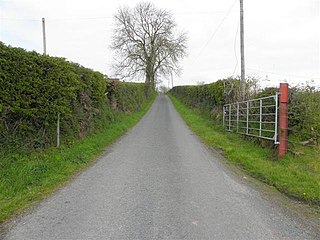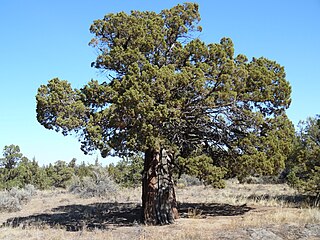Related Research Articles
A land value tax (LVT) is a levy on the value of land without regard to buildings, personal property and other improvements. It is also known as a location value tax, a site valuation tax, split rate tax, or a site-value rating,

For local government purposes, Scotland is divided into 32 areas designated as "council areas", which are all governed by unitary authorities designated as "councils". They have the option under the Local Government (Scotland) Act 1997 of being known as a "comhairle" when opting for a Gaelic name; only Comhairle nan Eilean Siar has chosen this option, whereas the Highland Council has adopted its Gaelic form alongside its English equivalent informally.
A property tax or millage rate is an ad valorem tax on the value of a property.

The Crown Estate is a collection of lands and holdings in the United Kingdom belonging to the British monarch as a corporation sole, making it "the sovereign's public estate", which is neither government property nor part of the monarch's private estate.
Rates are a type of property tax system in the United Kingdom, and in places with systems deriving from the British one, the proceeds of which are used to fund local government. Some other countries have taxes with a more or less comparable role, like France's taxe d'habitation.

The courts of Scotland are responsible for administration of justice in Scotland, under statutory, common law and equitable provisions within Scots law. The courts are presided over by the judiciary of Scotland, who are the various judicial office holders responsible for issuing judgments, ensuring fair trials, and deciding on sentencing. The Court of Session is the supreme civil court of Scotland, subject to appeals to the Supreme Court of the United Kingdom, and the High Court of Justiciary is the supreme criminal court, which is only subject to the authority of the Supreme Court of the United Kingdom on devolution issues and human rights compatibility issues.
Ordnance Survey of Northern Ireland (OSNI) was the official mapping agency of Northern Ireland. The agency ceased to exist separately on 1 April 2008 when it became part of Land and Property Services, an executive agency of the Northern Ireland Department of Finance and Personnel, along with the Rate Collection Agency, the Valuation and Lands Agency, and the Land Registry.

The Valuation Office Agency is a government body in England and Wales. It is an executive agency of Her Majesty's Revenue and Customs.
Griffith's Valuation was a boundary and land valuation survey of Ireland completed in 1868.
The Lands Tribunal was a tribunal in the United Kingdom created by the Lands Tribunal Act 1949 that had jurisdiction in England and Wales and Northern Ireland, although in the Northern Ireland context the term Lands Tribunal normally refers to a different body, the Lands Tribunal for Northern Ireland. The Lands Tribunal was unusual in having both first instance and appellate jurisdiction. The functions of the Lands Tribunal were transferred to the Upper Tribunal in June 2009 by the Transfer of Tribunal Functions Order 2009.

The Scottish Land Court is a Scottish court of law based in Edinburgh with subject-matter jurisdiction covering disputes between landlords and tenants relating to agricultural tenancies, and matters related to crofts and crofters. The Scottish Land Court is both a trial court and an appeal court; hearings at first-instance are often heard by a Divisional Court of one of the Agricultural Members advised by the Principal Clerk. Decisions of the Divisional Court can be appealed to the Full Court, which will consist of at least one legally qualified judicial member and the remaining Agricultural Member. Some cases are heard at first-instance by the Full Court, and these cases may be appealed to the Inner House of the Court of Session.

Business rates is the commonly used name of Non-Domestic Rates in Scotland, a tax on occupation of non-domestic property. Rates are a property tax used to fund local services that dates back to the Poor Law.
The Lands Tribunal for Scotland is a tribunal with jurisdiction over land and property in Scotland, relating to title obligations, compulsory purchase and other private rights. The Tribunal was established under the Lands Tribunal Act 1949, which also created the separate Lands Tribunal in England and Wales and Northern Ireland.

Berrymount is a townland in the Parish of Tomregan, Barony of Loughtee Lower, County Cavan, Ireland.

Most local governments in the United States impose a property tax, also known as a millage rate, as a principal source of revenue. This tax may be imposed on real estate or personal property. The tax is nearly always computed as the fair market value of the property times an assessment ratio times a tax rate, and is generally an obligation of the owner of the property. Values are determined by local officials, and may be disputed by property owners. For the taxing authority, one advantage of the property tax over the sales tax or income tax is that the revenue always equals the tax levy, unlike the other taxes. The property tax typically produces the required revenue for municipalities' tax levies. A disadvantage to the taxpayer is that the tax liability is fixed, while the taxpayer's income is not.
The two-volume Return of Owners of Land, 1873 is the first complete picture of the distribution of land in Great Britain since the 1086 Domesday Book. The 1873 Return is sometimes called the "Modern Domesday". It arose from the desire of the Victorian governing landed classes, many of whom sat in the House of Lords, to counter rising public clamour about what was considered the monopoly of land.
The Gallagher Amendment was an amendment to the Colorado Constitution enacted in 1982 concerning property tax. It set forth the guidelines in the Colorado Constitution for determining the actual value of property and the valuation for assessment of such property. The Gallagher Amendment was a legislative referendum drafted by Dennis J. Gallagher, then a state legislator. It was repealed in 2020.
Rates are a tax on property in the United Kingdom used to fund local government. Business rates are collected throughout the United Kingdom. Domestic rates are collected in Northern Ireland and were collected in England and Wales before 1990 and in Scotland before 1989.

Redmond–Bend Juniper State Scenic Corridor is a collection of ten unimproved land parcels administered for the Oregon Parks and Recreation Department. The parcels are located along U.S. Route 97 between Bend and Redmond, Oregon, United States. It is named for the large western juniper trees found on the parcels. The scenic corridor is completely undeveloped with no trails or park facilities of any kind.